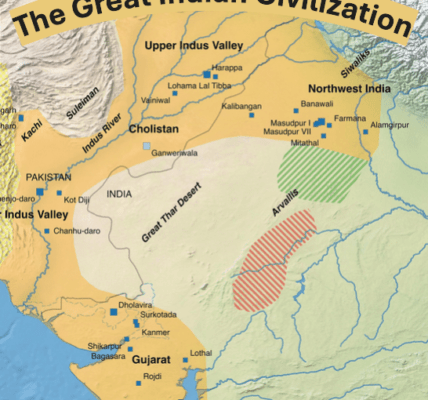
A new scientific study dramatically revises the Indus Valley farming timeline. For decades, textbooks claimed that the first farmers settled at Mehrgarh, in present‑day Pakistan, around 8000 BCE. By analysing carbon sealed inside the enamel of 23 human teeth, researchers now place the beginning of agriculture nearer to 5000 BCE—almost 3,000 years later, shifting the accepted Indus Valley farming timeline by millennia.
How Scientists Figured It Out
Earlier versions of the Indus Valley farming timeline relied on radiocarbon dates from burnt wood, a material that can be centuries older than the event dated. The new team instead dated carbon locked in tooth enamel, which records the actual year a person died and is far less prone to contamination. Using this sturdier material, advanced laboratory cleaning, and Bayesian computer modelling, they created a much tighter chronology.
What They Found
The revised Indus Valley farming timeline shows that cultivation at Mehrgarh began between 5223 BCE and 4914 BCE and that the first farming village lasted only 200 to 500 years. During this period, residents grew wheat and barley and herded goats and sheep—yet they still had no pottery. Ceramic vessels appear only after about 4650 BCE, their styles matching pottery from south‑eastern Iran and hinting that ideas and perhaps people flowed eastward into the region.
Why This Matters
These findings demonstrate that South Asia adopted agriculture comparatively late, prompting archaeologists to shorten the region’s Neolithic period in history books. More broadly, the study highlights how switching from charcoal to tooth enamel for radiocarbon dating can transform our understanding of prehistory. Mehrgarh remains pivotal, but now it signifies a swift, later arrival of farming around 5000 BCE, not an 8000 BCE agricultural revolution. In short, the Indus Valley farming timeline has been pushed forward, rewriting a crucial chapter of South Asian archaeology.
Quick Summary of Findings
- Farming at Mehrgarh began around 5000 BCE—not 8000 BCE—based on new radiocarbon dates.
- Researchers measured carbon in tooth enamel from 23 burials, avoiding errors common with charcoal samples.
- The first farming phase lasted only 200–500 years (5223–4914 BCE).
- Pottery appears after ≈ 4650 BCE and resembles southeast‑Iranian styles, hinting at west‑to‑east influence.
- South Asia adopted farming later than once thought, so the regional “Neolithic” period needs to be shortened.
Source: Mutin, B., Zazzo, A., Bondioli, L. et al. New radiocarbon dates of human tooth enamel reveal a late appearance of farming life in the indus Valley. Sci Rep 15, 11345 (2025). https://doi.org/10.1038/s41598-025-92621-5














